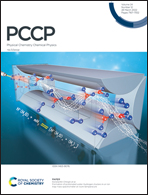Photophysical properties and optical nonlinearity of cyclo[18]carbon (C18) precursors, C18–(CO)n (n = 2, 4, and 6): focusing on the effect of the carbonyl groups†
Abstract
The electronic spectra and (hyper)polarizability of C18–(CO)n (n = 2, 4, and 6) are studied using theoretical calculations to reveal the effect of introducing carbonyl (–CO) groups on the molecular optical properties. Successive introduction of –CO groups is observed to cause a red-shift in the absorption spectrum, but maximum absorption of all molecules is mainly due to the charge redistribution within the C18 moiety. The (hyper)polarizabilities of the cyclocarbon oxides present an ascending trend with the –CO groups in the molecule, and the higher-order response properties are more sensitive. With (hyper)polarizability density analysis and (hyper)polarizability contribution decomposition, the fundamental reasons for the difference of (hyper)polarizability of different molecules are systematically discussed from the perspective of physical and structural origins, respectively. Significant optical resonances under the frequency-dependent fields are found for the (hyper)polarizabilities of the cyclocarbon oxides, which is in contrast to the insignificant influence on their polarizability.
![Graphical abstract: Photophysical properties and optical nonlinearity of cyclo[18]carbon (C18) precursors, C18–(CO)n (n = 2, 4, and 6): focusing on the effect of the carbonyl groups](/en/Image/Get?imageInfo.ImageType=GA&imageInfo.ImageIdentifier.ManuscriptID=D1CP05883E&imageInfo.ImageIdentifier.Year=2022)


 Please wait while we load your content...
Please wait while we load your content...